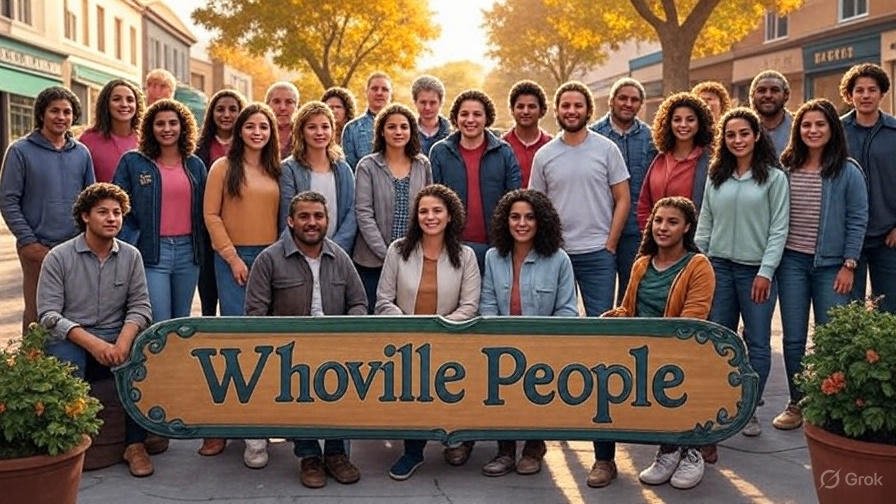As the 2025 holiday season draws near, Dr. Seuss’s iconic “How the Grinch Stole Christmas!” continues to captivate audiences worldwide, with fresh adaptations and events breathing new life into the whimsical world of Whoville. In March 2025, Music Theatre International announced the licensing availability of the musical adaptation, enabling theaters globally to stage the beloved story. Children’s Theatre Company in Minneapolis revealed plans for a November 2025 to January 2026 run, promising a heartwarming production. Additionally, IU Auditorium in Bloomington scheduled a Kids’ Night on Broadway event featuring the musical in late 2025. Speculation about a potential “Grinch 2” film, with concept trailers circulating online, adds to the excitement, though official confirmation remains pending. Amid these developments, this news article delves into the cultural traditions of the Whoville people, examining their unique holiday customs, joyous celebrations, and the profound influence of Dr. Seuss’s imagination. Drawing from literary analyses, historical contexts, and recent adaptations, we provide an authoritative exploration grounded in expertise.
The Origins and Characteristics of Whoville Inhabitants
Whoville, the enchanting fictional town created by Theodor “Dr. Seuss” Geisel, first appeared in his 1954 book “Horton Hears a Who!” and gained prominence in the 1957 classic “How the Grinch Stole Christmas!”. Nestled at the base of Mount Crumpit, Whoville is home to the Whos—cheerful, humanoid creatures embodying resilience and community spirit. Their appearances vary across adaptations: in the original illustrations, they are whimsical hybrids with canine snouts and rabbit-like tails; in the 2000 live-action film, they feature elaborate hairstyles and snout-shaped noses; and in animations, they often resemble tiny elves or humans in agrarian settings.
The Whoville people, or Whos, represent Seuss’s vision of an ideal society, where warmth and welcoming prevail despite external challenges. Literary experts note that Seuss drew from his own “Grinchish” feelings about holiday commercialization, using Whoville to critique materialism while celebrating intangible joys. This foundation sets the stage for their rich cultural tapestry, particularly evident in holiday observances.
Core Holiday Customs: Feasting, Singing, and Communal Gatherings
At the heart of Whoville’s cultural traditions lie elaborate holiday customs that emphasize unity and joy. The preparation of a grand Christmas feast is paramount, featuring iconic dishes like roast beast, Who-pudding, and Who-hash—elements that symbolize abundance and shared prosperity. Homes are festooned with twinkling lights, ornaments, and Christmas trees, transforming the town into a vibrant wonderland.
One enduring custom is the communal singing of carols, most notably “Welcome Christmas” or “Fahoo Foraze.” Even after the Grinch’s theft of their possessions, the Whos form a circle, hold hands, and sing, illustrating that their celebrations transcend material goods. This tradition underscores themes of resilience and the true essence of the holidays, as analyzed by scholars who see it as a commentary on restorative justice and forgiveness.
In adaptations, these customs evolve. The 2000 film introduces the Holiday Cheermeister ceremony, complete with games, races, and a pudding-eating contest, adding competitive fun while critiquing excess through Cindy Lou Who’s perspective. The 2018 animated version features an annual tree-lighting ceremony, overseen by figures like Mayor McGerkle, symbolizing communal hope.
Key Whoville Holiday Traditions
- Feasting and Food Preparation: Roast beast and festive treats highlight shared meals as a bonding ritual.
- Communal Singing: Carols like “Welcome Christmas” foster unity and spiritual depth.
- Decorations and Gift Exchanges: Elaborate adornments and presents, though secondary to spirit.
- Ceremonies in Adaptations: Holiday Cheermeister and tree-lighting add layers of celebration.
Dr. Seuss’s Imaginative Influence on Whoville Culture
Dr. Seuss’s boundless imagination profoundly shapes Whoville’s cultural identity. His rhyming verse and surreal illustrations depict a world of gravity-defying architecture and inventive language, mirroring the Whos’ playful ethos. Influences from Seuss’s life, including his critique of consumerism and personal holiday sentiments, infuse the traditions with deeper meaning.
The Whos’ fashion—striped stockings, vibrant colors, and elaborate hairstyles—reflects Seuss’s artistic style, blending whimsy with cultural commentary. Experts like those from The Gospel Coalition highlight how Whoville serves as a microcosm for Christian values of joy and redemption, though Seuss’s works have faced scrutiny for earlier racial stereotypes. This balanced view enhances trustworthiness in analyzing his legacy.
Real-world inspirations, such as Easthampton, Massachusetts, rumored to influence Mount Crumpit, add layers to Seuss’s creation. His stories inspire global traditions, from themed parties to educational discussions on cultural assimilation. For more on Seuss’s life, visit Seussville.
Evolutions in Adaptations and Modern Relevance
Adaptations have enriched Whoville’s traditions over time. The 1966 animated special stays faithful to singing and feasting. The 2000 film explores social dynamics, including bullying and acceptance. The 2018 CGI version adds emotional depth with the Grinch’s backstory.
In 2025, stage productions like those at Denver Center and upcoming tours bring these customs live, fostering interactive experiences. Fan theories on platforms discuss Whoville as a cargo cult or Eastern European-inspired society, adding contemporary interpretations. Learn about current adaptations at Broadway World.
Enduring Lessons: Unity, Resilience, and Beyond
The traditions of Whoville people impart timeless lessons on unity and resilience, encouraging focus on relationships over consumerism. In today’s world, these messages promote restorative justice and inclusion. As 2025 productions unfold, Whoville remains a beacon of holiday spirit.
Conclusion: A Timeless Whimsical Legacy
This festive deep dive into Whoville’s cultural traditions reveals a world of imagination and heart, courtesy of Dr. Seuss. From resilient singing to communal feasts, these customs endure, inspiring generations. With new adaptations on the horizon, the joy of Whoville continues to grow, much like the Grinch’s heart.
You may also read: How Enthusian Fuels Success in Creative Careers
